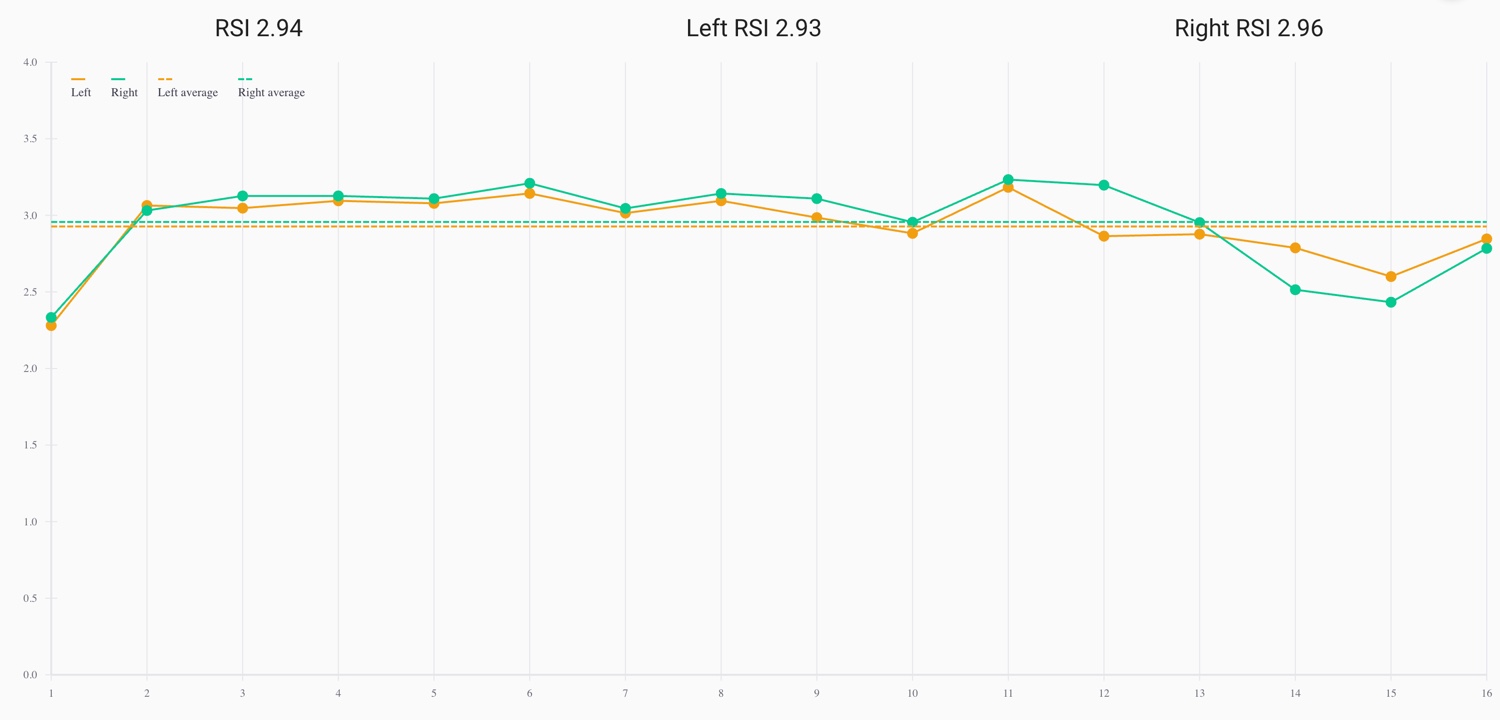The RSI dataview gives a good idea of fatigue vs. readiness.
What is the Reactive Strength Index?
RSI measures how an athlete performs during plyometric activities by measuring the muscle-tendon stress and reactive jump capacity. It demonstrates an athlete’s ability to rapidly change from an eccentric motion into a concentric muscular contraction and is an expression of their dynamic explosive vertical jump capacity. As well as being a useful marker for measuring performance and training progress, the RSI tests are also commonly used to measure neuromuscular fatigue during competition periods in team sports.
How to calculate the Reactive Strength Index
RSI = Flight Time / Ground Contact Time
- Flight Time is the time from jump takeoff to landing
- Ground Contact Time is the time spent with the foot touching the ground between landing and the next takeoff
Jump Height is the height of the body’s centre of mass from the ground and is also calculated from flight time - it can be seen in the DAILY summary
How to interpret the Reactive Strength Index
RSI is measured during cyclic jumping assessments, including the Consecutive Countermovement Jump and the Cyclic Jump.

Summary Bar:
- RSI: Average RSI between the left and right legs
- Left RSI: RSI for the left leg only
- Right RSI: RSI for the right leg only
Graph:
- X-axis: sequential jump number
- Y-axis: RSI scale
- Dots: the individual RSI for each jump for each foot (green for right foot, orange for left foot)
- Solid Lines: jump-to-jump RSI trend line for each foot
- Dotted Lines: average RSI for the entire session for each foot
What to look for:
- Average RSI for consistent number of jumps before and after a training session
- Average RSI for a consistent number of jumps before a training session on consecutive days
- Average RSI for a consistent number of jumps after a training session on consecutive days
- Number of jumps before a significant drop in RSI
.png?height=120&name=Plantiga%20lockup%20black%20(1).png)